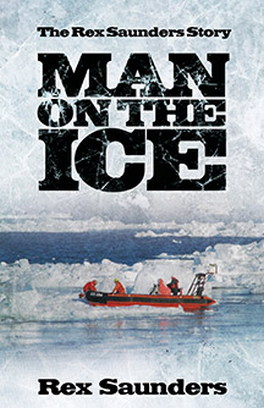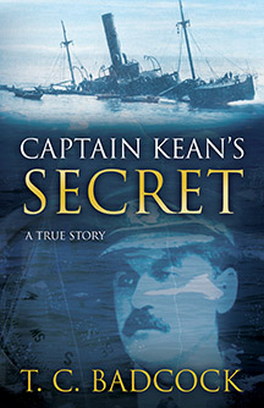On January 4, 1914, the Karluk was stuck in ice when the ominous sound of the ship’s stern being ripped open by pack ice was heard by all on board. It sounded like the firing of a cannon. Bartlett immediately ordered supplies be unloaded on the ice. The Karluk began to break up on January 10, and all on board were ordered to abandon ship. When everyone was safely on the ice, the captain himself went back to his cabin and, all alone, put Chopin’s Funeral March on his Victrola. As the water rose in the cabin, he whispered "Goodbye," left the sinking vessel to the mournful sound of Chopin’s music and hurried out on the ice. It was to be the beginning of one of the greatest feats of valour in world history.
The Last Voyage of the Karluk
by Captain Bob Bartlett
We did not all come back.
Fifteen months after the Karluk, flagship of Vilhjalmar Stefansson’s Canadian Arctic Expedition, steamed out of the navy yard at Esquimault, British Columbia, the United States revenue cutter, Bear, that perennial Good Samaritan of the Arctic, which thirty years before had been one of the ships to rescue the survivors of the Greely Expedition from Cape Sabine, brought nine of us back again to Esquimault—nine white men out of the twenty, who, with two Eskimo men, an Eskimo woman and her two little girls—and a black cat—comprised the ship’s company when she began her westward drift along the northern coast of Alaska on September 23, 1913. Years of sealing in the waters about Newfoundland and of Arctic voyaging and ice travel with Peary had given me a variety of experience to fall back upon by way of comparison; the events of those fifteen months, I must say, justified the prophecy that I made in a letter to a Boston friend, just before we left Esquimault: “This will have the North Pole trip ‘beaten to a frazzle.’”
It did; and there were two main reasons why.
One was that the Karluk, though an old-time whaler, was not built, as the Roosevelt was, especially for withstanding ice pressure; very few ships are. Dr. Nansen’s ship, the Fram, was built for the purpose and has had a glorious record in both the Arctic and the Antarctic. The Karluk, a brigantine of 247 tons, 126 feet long, twenty-three feet in beam, drawing 16 ½ feet when loaded, was built in Oregon originally to be a tender for the salmon fisheries of the Aleutian Islands. Her duty had been to go around among the stations and pick up fish for the larger ships. The word karluk, in fact, is Aleut for fish. When later in her career she was put into the whaling service her bow and sides were sheathed with two-inch Australian ironwood, but she had neither the strength to sustain ice pressure nor the engine power to force her way through loose ice. She had, however, an honourable career in the now virtually departed industry of Arctic whaling, and was personally and pleasantly known to Stefansson, who had travelled on her from place to place along the Alaskan coast on several occasions during his expeditions of 1906–7 and 1908–12.
The other reason was that the winter of 1913–14 was unprecedented in the annals of northern Alaska. It came on unusually early, as we were presently to learn, and for severity of storm and cold had not its equal on record.
The National Geographic Society had originally planned to finance our expedition, and it was only at the urgent request of the Canadian premier, the Right Hon. R. L. Borden, that the Society relinquished its direction to the enterprise. The Canadian Government felt that since the country to be explored was Canadian territory it was only fitting that the expedition fly its flag and be financed from its treasury.
When I returned from the seal fisheries to Brigus, my old home in Newfoundland, in the spring of 1913, I found awaiting me a telegram from Stefansson, asking me to join his expedition and take charge of the Karluk. I went at once to New York, then to Ottawa for a day with the government authorities and direct from there to Victoria, BC. It was the middle of May and there was work to be done to get the ship ready to sail in June.
It was an elaborate expedition, one of the largest and most completely equipped, I believe, that have ever gone into the Arctic. It differed, too, in one other respect, than that of size, from previous Arctic expeditions, in that its main objects were essentially practical—in fact, one might say, commercial. It was in two divisions. The northern party, under Stefansson himself, was primarily to investigate the theory so ably advanced by Dr. R. A. Harris of the United States Coast and Geodetic Survey that new land—perhaps a new continent—was to be found north of Beaufort Sea, which is that part of the Arctic Ocean immediately to the north of Alaska. “The main work of the party aboard the Karluk”—to quote Stefansson—“was to be the exploration of the region lying west of the Parry Islands and especially that portion lying west and northwest from Prince Patrick Island. The Karluk was to sail north approximately along the 141st meridian until her progress was interfered with either by ice or by the discovery of land. If land were discovered a base was to be established upon it, but if the obstruction turned out to be ice an effort was to be made to follow the edge eastward with the view of making a base for the first year’s work near the southwest corner of Prince Patrick Island, or, failing that, on the west coast of Banks Island.” The Karluk was to go first to Herschel Island, the old rendezvous of the Arctic whaling fleet and the northernmost station of the Canadian Mounted Police. If she should be beset in the ice and forced to drift, it was expected that certain theories about the direction of Arctic currents would be tested, and there would also be opportunity for dredging and sounding.
Both of these main objects were accomplished; Stefansson ultimately found new land and the Karluk engaged in an Arctic drift, but neither result was attained in quite the way which was planned when we were getting the ship ready in May and June 1913. We returned—some of us—rather earlier than we expected, for we were prepared to be away until September 1916, and contrary to one of the theories of Arctic currents we did not drift across the Pole to the Greenland shore. Before we started some of the newspaper accounts of the expedition said that the ship might be crushed in the ice; the newspapers are more often correct than they are supposed to be.























